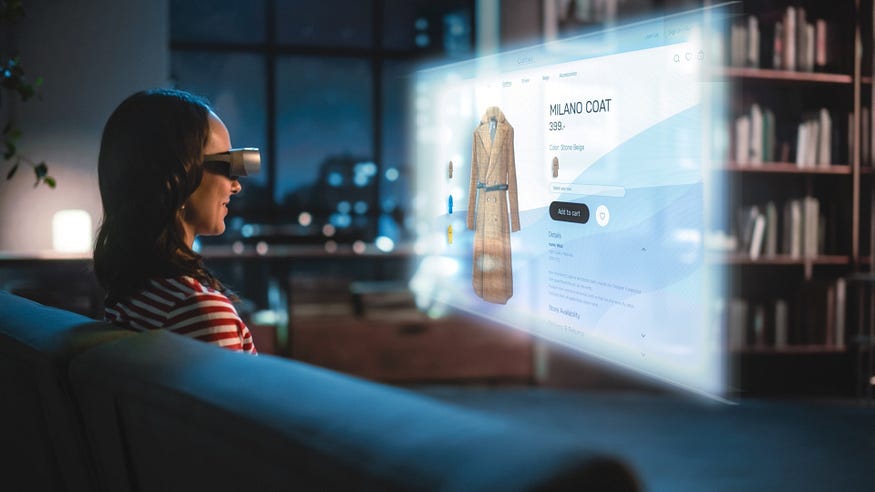Creating an AI-Powered Fashion Stylist for Personalized Outfit Recommendations (Python, TensorFlow, Scikit-learn)

In this tutorial, we will learn how to create an AI-powered fashion stylist using Python. Our goal is to build a system that suggests outfit combinations based on user preferences, current fashion trends, and weather conditions. By the end of this tutorial, you will have a basic understanding of how to leverage machine learning algorithms to provide personalized fashion recommendations.
Prerequisites: To follow along with this tutorial, you should have a basic understanding of Python programming language and familiarity with machine learning concepts. You will also need to install the following Python libraries:
- Pandas:
pip install pandas - NumPy:
pip install numpy - scikit-learn:
pip install scikit-learn - TensorFlow:
pip install tensorflow
Step 1: Data Collection
To train our fashion stylist model, we need a dataset containing information about various clothing items, their styles, and weather conditions. You can either collect your own dataset or use publicly available fashion datasets, such as the Fashion MNIST dataset.
Step 2: Preprocessing the Data
Once we have our dataset, we need to preprocess it before feeding it into our machine learning model. This step involves cleaning the data, handling missing values, and transforming categorical variables into numerical representations.
Here’s an example of data preprocessing using Pandas:
import pandas as pd
# Load the dataset
data = pd.read_csv('fashion_dataset.csv')
# Clean the data (remove duplicates, handle missing values, etc.)
data = data.drop_duplicates()
data = data.dropna()
# Transform categorical variables into numerical representations
data['color'] = pd.Categorical(data['color']).codes
data['style'] = pd.Categorical(data['style']).codes
# Split the data into features and target variables
X = data[['color', 'style', 'weather_conditions']]
y = data['outfit_combination']
print("Preprocessed data shape:", X.shape)
Step 3: Feature Engineering
To improve the performance of our fashion stylist, we can create additional features from the existing data. For example, we can extract color information from images, calculate similarity scores between different clothing items, or incorporate fashion trend data.
Here’s an example of creating a similarity score feature using scikit-learn’s cosine similarity:
from sklearn.metrics.pairwise import cosine_similarity
# Assuming we have a user-item matrix with clothing features
item_features = ...
# Calculate cosine similarity between item features
similarity_matrix = cosine_similarity(item_features)
# Create a similarity score feature for each item
item_similarity_scores = similarity_matrix.mean(axis=1)
# Add the similarity score feature to the feature matrix
X['similarity_score'] = item_similarity_scores
print("Feature matrix shape:", X.shape)
Step 4: Building the Recommendation Model
Now, let’s train our recommendation model using machine learning algorithms. One popular approach is to use collaborative filtering, which predicts outfit combinations based on the preferences of similar users. We can implement this using techniques like matrix factorization or deep learning models such as neural networks.
Here’s an example of using collaborative filtering with matrix factorization:
import numpy as np
from sklearn.decomposition import NMF
# Assuming we have a user-item matrix with ratings
user_item_matrix = ...
# Perform matrix factorization
model = NMF(n_components=10) # Number of latent factors
W = model.fit_transform(user_item_matrix)
H = model.components_
# Get recommendations for a user
user_index = ...
user_preferences = W[user_index, :]
predicted_ratings = np.dot(user_preferences, H)
top_items_indices = predicted_ratings.argsort()[-5:][::-1]
top_items = item_names[top_items_indices]
print("Top recommended items:", top_items)
Step 5: Integration with User Preferences and Weather Conditions
To make our fashion stylist personalized and weather-aware, we need to incorporate user preferences and weather data into our recommendation system. You can prompt the user to input their preferred clothing styles, colors, or specific items they like/dislike. Additionally, you can use weather APIs to retrieve weather information for the user’s location and adjust the recommendations accordingly.
Here’s an example of integrating user preferences and weather conditions into the recommendation process:
# Get user preferences
preferred_color = input("Enter your preferred color: ")
preferred_style = input("Enter your preferred style: ")
weather_condition = get_weather_condition()
# Filter data based on user preferences and weather conditions
filtered_data = data[(data['color'] == preferred_color) &
(data['style'] == preferred_style) &
(data['weather_conditions'] == weather_condition)]
# Generate outfit recommendations
outfit_recommendations = filtered_data['outfit_combination'].sample(5).tolist()
print("Recommended outfits:")
for outfit in outfit_recommendations:
print(outfit)
In the above example, we prompt the user to enter their preferred color and style using the input function. We then call the get_weather_condition function (which can be implemented using weather APIs) to retrieve the weather condition for the user’s location. Based on the user preferences and weather condition, we filter the data to find relevant outfit combinations. Finally, we generate and display a list of recommended outfits.
By incorporating user preferences and weather conditions, we ensure that the outfit recommendations are personalized and suitable for the current weather, offering a more tailored and relevant fashion guidance to the users.
Step 6: Developing the User Interface
To provide a user-friendly experience, we can build a simple graphical user interface (GUI) where users can input their preferences and view the recommended outfit combinations. Python libraries like Tkinter or PyQt can help in developing the GUI.
Here’s an example of developing a GUI using Tkinter:
import tkinter as tk
def get_recommendations():
# Get user preferences and weather conditions
preferred_color = color_entry.get()
preferred_style = style_entry.get()
weather_condition = get_weather_condition()
# Filter data based on user preferences and weather conditions
filtered_data = data[(data['color'] == preferred_color) &
(data['style'] == preferred_style) &
(data['weather_conditions'] == weather_condition)]
# Generate outfit recommendations
outfit_recommendations = filtered_data['outfit_combination'].sample(5).tolist()
# Clear previous recommendations and display new ones
recommendations_text.delete('1.0', tk.END)
for outfit in outfit_recommendations:
recommendations_text.insert(tk.END, outfit + '\n')
# Create a GUI window
window = tk.Tk()
window.title("Fashion Stylist")
# Create labels and entry fields for user input
color_label = tk.Label(window, text="Preferred Color:")
color_label.pack()
color_entry = tk.Entry(window)
color_entry.pack()
style_label = tk.Label(window, text="Preferred Style:")
style_label.pack()
style_entry = tk.Entry(window)
style_entry.pack()
recommend_button = tk.Button(window, text="Get Recommendations", command=get_recommendations)
recommend_button.pack()
# Create a text box to display recommendations
recommendations_text = tk.Text(window, height=10, width=50)
recommendations_text.pack()
# Run the GUI
window.mainloop()
In the above example, we create a GUI window using Tkinter. We add labels and entry fields for users to input their preferred color and style. When the user clicks the “Get Recommendations” button, the get_recommendations function is called, which filters the data based on user preferences and weather conditions, generates outfit recommendations, and displays them in the text box.
In this tutorial, we learned how to create an AI-powered fashion stylist using Python. We covered data collection, preprocessing, feature engineering, model building using collaborative filtering, and integrating user preferences and weather conditions into the recommendations. By personalizing the outfit suggestions based on individual preferences and current trends, we can create a fashion stylist that offers tailored and up-to-date fashion advice to users.
Lyron Foster is a Hawai’i based African American Author, Musician, Actor, Blogger, Philanthropist and Multinational Serial Tech Entrepreneur.

